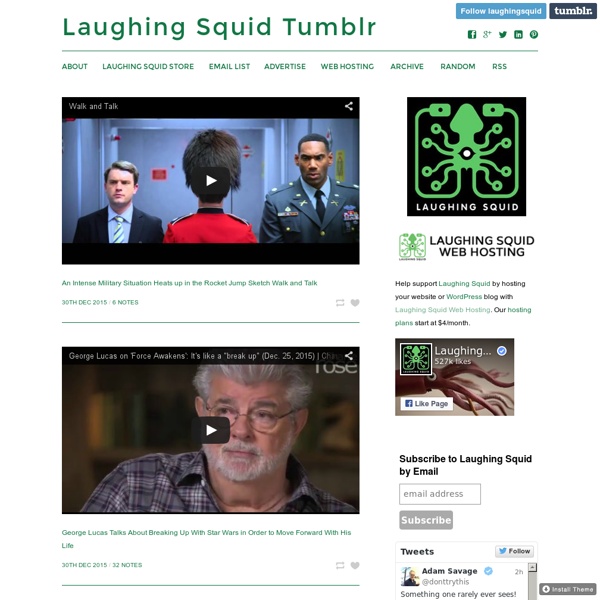



Comics, Quizzes, and Stories - The Oatmeal LHC NEWS The Large Hadron Collider (LHC) is the world’s largest and most powerful particle accelerator. It first started up on 10 September 2008, and remains the latest addition to CERN’s accelerator complex. The LHC consists of a 27-kilometre ring of superconducting magnets with a number of accelerating structures to boost the energy of the particles along the way. Inside the accelerator, two high-energy particle beams travel at close to the speed of light before they are made to collide. The beams travel in opposite directions in separate beam pipes – two tubes kept at ultrahigh vacuum. Thousands of magnets of different varieties and sizes are used to direct the beams around the accelerator. All the controls for the accelerator, its services and technical infrastructure are housed under one roof at the CERN Control Centre. How many kilometres of cables are there on the LHC? Download the LHC guide [PDF] CERN takes safety very seriously. Read about the safety of the LHC
Neil Fraser Euro Jazz Funk Madness Back in the early 1970’s, the fusion of jazz with funk and elements of rock was a pretty big trend in North America. With the recent introduction of synthesizers and other electric instruments and with the increasing popularity of funk music; recognized jazz band leaders such as Miles Davis, Cannonball Adderley and Donald Byrd started exploring new electronic grounds. Before long, their most noted band members started their own jazz-funk outfits and by the mid 70’s, the likes of Herbie Hancock and the Head Hunters, Chick Corea and Return to Forever and Joe Zawinul and Weather Report were drawing huge attention and had become big record sellers. What was going on in Europe at the time? With the psych pop and Yé-Yé craze slowly fading and the Disco frenzy just a few years ahead… Was the talented European jazz avant-garde falling asleep? Here is a selection of 20 super rare - super funked up European jazz grooves that you can't miss on. Tracklist is: 01. This is like good wine.
yuumei :: eliax - Para Mentes Curiosas Today I learned something new. Super-earth exoplanet found that could support life | Science Astronomers say they have found a second planet outside our solar system that is the right distance from its star to potentially support life. But any possible inhabitants would need to have a taste for an environment that felt like a hot steam bath. European astronomers announced the discovery of a total of 50 planets outside our solar system. Among these was one which lies in the "Goldilocks zone" – an area which is neither too hot nor too cold for liquid water, an essential for Earth-like life, to be present. The only past discovery of a Goldilocks planet that still stands up today is one that was found in 2007. To be able to support life the new planet would need not only to have water, it would also need to be solid, like earth and not made up primarily of gas, like Jupiter. The newly discovered planet, which is called HD85512b, is about 3.6 times the mass of Earth, it is estimated that temperatures there range from 30C to 50C, and it is thought that the atmosphere is very humid.
Don't Say Cat Inviaci file di qualsiasi tipo purché suscitino ilarità! (o raffigurino ragazze maggiorenni in abiti succinti). L’importante è che tu ne sia l’autore: ci piace che i contenuti siano sempre e solo originali! Scrivici a collabora@dontsaycat.it e allega il tuo materiale in alta risoluzione (max 5 mega per ogni mail). collaborazioni occasionali Puoi inviarci materiale di qualsiasi tipo, una volta nella vita o anche tutti i giorni. contratti a tempo determinato Se sei davvero davvero forte e disegni già la tua striscia umoristica o ancora meglio hai inventato un filone comico tutto tuo potresti saltare a bordo della redazione e tenere la tua personalissima rubrica.
Ateismo para Cristianos. 2011 September 4 - In the Shadow of Saturn Discover the cosmos! Each day a different image or photograph of our fascinating universe is featured, along with a brief explanation written by a professional astronomer. 2011 September 4 In the Shadow of Saturn Image Credit: Cassini Imaging Team, SSI, JPL, ESA, NASA Explanation: In the shadow of Saturn, unexpected wonders appear. The robotic Cassini spacecraft now orbiting Saturn drifted in giant planet's shadow for about 12 hours in 2006 and looked back toward the eclipsed Sun. Tomorrow's picture: jet movie Authors & editors: Robert Nemiroff (MTU) & Jerry Bonnell (UMCP)NASA Official: Phillip Newman Specific rights apply.NASA Web Privacy Policy and Important NoticesA service of:ASD at NASA / GSFC& Michigan Tech.